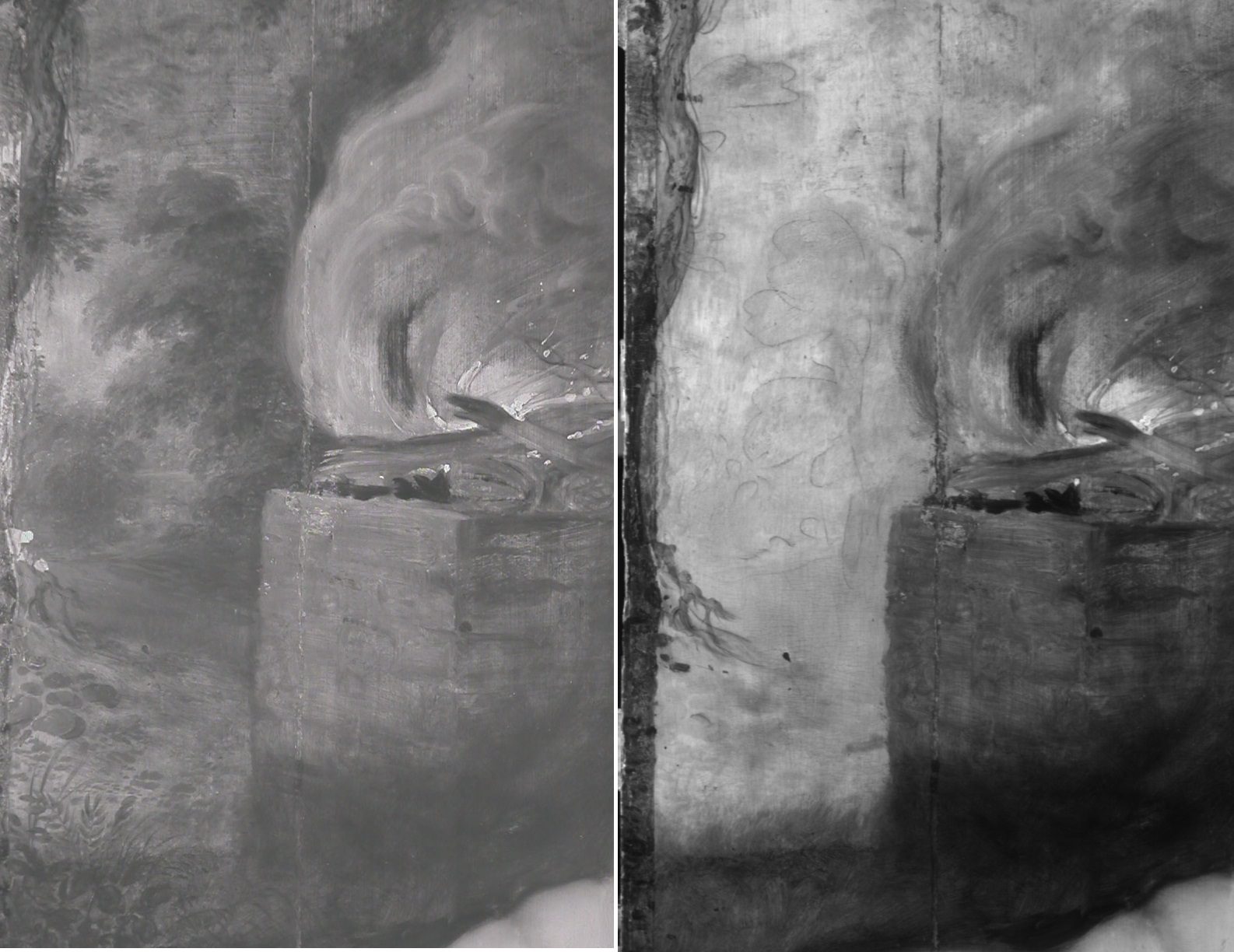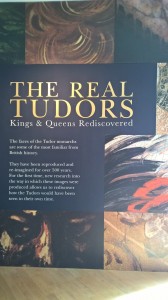Building on the huge body of research undertaken for the Making Art in Tudor Britain project, the NPG mounted a ground-breaking exhibition which used technical analysis to explore the representation of the five kings and queens of the Tudor dynasty. The Real Tudors re-examined Royal Tudor portraiture attempting to see these portraits in a new light, as they would have been viewed in their own time, by using the latest tools of scientific investigation to better understand the development of these iconic images. For example, the two portraits of the young Edward VI are both echo Holbein’s Whitehall prototype of Henry VIII (Edward’s father) and depict the boy standing with his feet wide apart. Infrared reflectography of the 1547 portrait of the boy king clearly shows that the feet were initially set even further apart before the artist realised that this would appear a little to exaggerated for a nine year old boy.
Author Archives: kate
TSR contribute Technical Feature to the Picture Restorer Journal
Underdrawing on Rubens’ Cain Slaying Abel – A Case Study Highlighting the Different Penetration of Infrared Cameras
‘It’s widely understood that if we want to find underdrawings the infrared part of the spectrum is the place to go. But not all infrared detecting devices will reveal the same things. To help demystify the difference between infrared photography and infrared reflectography, Kate Stonor and Clare Richardson of Tager Stonor Richardson describe the discovery of some fascinating underdrawings in a Rubens painting.’ The Picture Restorer, Issue 43, Autumn 2013, pp17-19. http://www.thepicturerestorer.co.uk/
The article discusses some of the recent developments in the infrared examination of works of art and compares the relative penetration of digital photography and reflectography with the OSIRIS camera, used by Tager Stonor Richardson. The difference in operation wavelength between these two techniques, photography and reflectography, was clearly illustrated by a recent technical examination of the Courtauld Gallery’s Cain Slaying Abel (1608-09). Though a relatively early work, Rubens’ virtuoso handling of the paint led us to assume that no traditional underdrawing had been used. This was supported by the first infrared image captured using an adapted digital camera. However, something very unexpected was revealed by the infrared image captured using the OSIRIS system: there was a distinct, carbon-based underdrawing beneath the trees at the left. The foliage in this area uses azurite pigment mixed with lead tin yellow, some lead white and earths to create the green tones. Azurite and malachite pigments are relatively absorbing of infrared and therefore much more difficult to penetrate. In order to ‘see through’ these paint layers it was necessary to go further into the infrared region, beyond 1µm. This has some significant implications for the authorship of this part of the composition. The article describes the documentary evidence for Rubens’ use of studio assistants and specialists, including high status artists such as Frans Synders, and hypothesises that the underdrawing in the foliage might indicate the very early use of a landscape specialist – something that would have been missed if the painting had only been examined with infrared photography!
For an overall IRR image of the painting please go to our gallery: http://www.tsrimaging.com/gallery-15/

Digital IR photograph (left) taken with Nikon Coolpix E995 compared with IR Reflectogram (right) made with the OSIRIS camera (copyright TSR/OPUS Instruments). Both images of P.1978.PG.353 Cain Slaying Abel by Peter Paul Rubens, © the Samuel Courtauld Trust, The Courtauld Gallery, London
Renate Woudhuysen-Keller Festscrift: New Research on Underdrawing and Kate Stonor on Corot’s Technique
An interesting article addressing the relative absence of some underdrawing in certain genres of painting has been published as part of a Festscrift celebrating the work of Renate Woudhuysen-Keller. Charlotte Caspers, Johanneke Verhave and Margreet Wolters were involved in the recent research project examining the workshop of Dutch painter Michiel van Mierevelt, which was responsible for producing enormous numbers of portraits and portrait copies during the Seventeenth Century. Continue reading “Renate Woudhuysen-Keller Festscrift: New Research on Underdrawing and Kate Stonor on Corot’s Technique” »
Titian’s Venus & Adonis: A Curator’s Study Morning at Dulwich Picture Gallery, Saturday 24th November 2012
As part of their ‘Art for Adults’ programme, the Sackler Centre for Arts Education at the Dulwich Picture Gallery is running a ‘Curator’s Study Morning’ examining their newly conserved version of Venus & Adonis. The painting, now thought to have been produced in Titian’s workshop, had languished in storage since the late 19th century but recent restoration and research has helped to uncover its quality. TSR were lucky enough to undertake infrared examination of the Dulwich painting to contextualize the work amongst the many extant versions after Titian’s original. These issues will be discussed by Xavier Bray and Amy Concannon, Chief Curator and Assistant Curator at DPG, and Sophia Plender, the conservator who undertook the remarkable restoration, during the study morning.
If you are interested in attending please contact Lettie Mckie on 020 8299 8732 or l.mckie@dulwichpicturegallery.org.uk
Latest Edition of the National Gallery Technical Bulletin Published
Volume 33 includes five articles covering recent research undertaken at the National Gallery, including two articles co-written by TSR’s Kate Stonor on French 19th and early 20th century painting. Continue reading “Latest Edition of the National Gallery Technical Bulletin Published” »
John de Critz the Elder: Workshop production in Late Sixteenth and Early Seventeenth Century London
A very comprehensive study of the workshop production of John de Critz the Elder was undertaken by Edward Town for his article in the July 2012 issue of The Burlington Magazine. The varying quality of de Critz’s paintings was considered in light of the revelation that portraits continued to be produced by his workshop after the master’s eye sight had ‘fayled him’. And Town’s fascinating article puts forward the likely hypothesis that portraits might be priced according to the master’s input. These arguments are supported by the evidence gained from TSR’s infrared reflectography, which strongly suggests the repeated use of a face pattern for portraits of de Critz’s patron, Robert Cecil, 1st Earl of Salisbury; a method that would have facilitated the quick and efficient production of multiple portraits.

